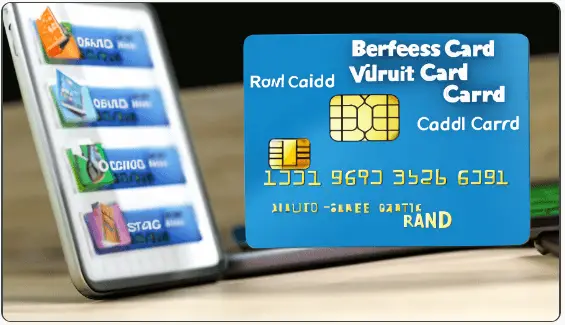online transactions have become an integral part of our lives. Whether it’s shopping, paying bills, or subscribing to services, the internet has made financial transactions more convenient than ever. To facilitate these online payments, various financial instruments have emerged, one of which is the Reloadable Virtual Credit Card (VCC). In this article, we will delve into the world of VCCs, exploring what they are, how they work, and their benefits.
Understanding Reloadable Virtual Credit Cards

What is a Virtual Credit Card (VCC)?
A Virtual Credit Card, commonly referred to as a VCC, is a digital representation of a traditional credit card. Unlike a physical card, you won’t find a tangible piece of plastic in your wallet. Instead, a VCC exists solely in the virtual realm, accessible through your computer or smartphone.
Reloadable vs. Non-Reloadable VCCs
There are two primary types of VCCs: reloadable and non-reloadable.
1. Non-Reloadable VCCs
Non-reloadable VCCs are often preloaded with a fixed amount of funds. Once you deplete the balance, you cannot add more money to them. These cards are ideal for one-time or limited-use transactions.
2. Reloadable VCCs
Reloadable VCCs, as the name suggests, allow users to add funds to the card after the initial purchase. This feature makes them suitable for regular online transactions and recurring payments.
How Do Reloadable Virtual Credit Cards Work?
Issuance and Activation
To obtain a Reloadable Virtual Credit Cards, you typically need to sign up with a financial institution or an online payment service provider. Once registered, you will be issued a virtual card number, expiration date, and CVV code, just like a physical Credit Card Logs.
Loading Funds
Reloadable VCCs require an initial deposit to activate the card. Users can load funds onto the card using various methods, such as bank transfers or linking it to their existing credit or debit cards. The loaded amount becomes the available balance for online purchases.
Making Online Payments
Using a Reloadable Virtual Credit Cards is similar to using a traditional credit card for online transactions. When you make a purchase, you enter the virtual card details during checkout. The transaction amount is deducted from your VCC’s available balance.
Replenishing Funds
The key advantage of a Reloadable Virtual Credit Cards is its ability to be topped up with funds. Users can add money to the card as needed, ensuring a continuous payment method for various online activities.
Benefits of Reloadable Virtual Credit Cards

Enhanced Security
One of the primary advantages of using a reloadable VCC is enhanced security. Since it’s a virtual card, there is no physical item to steal or misplace. Additionally, some VCC providers offer advanced security features like one-time-use card numbers, further protecting your financial information.
Budget Control
Reloadable VCCs are excellent tools for budgeting. Users can load a specific amount onto the card, helping them control their spending. This feature is particularly beneficial for individuals who want to limit their online shopping or manage their subscription services.
Anonymity
Reloadable VCCs offer a level of anonymity. They don’t require users to link their personal bank accounts or credit cards, providing an extra layer of privacy for online transactions.
Worldwide Acceptance
Most reloadable VCCs are widely accepted by online merchants globally. This makes them a versatile payment option for international transactions and purchases from websites around the world.
Making the Most of Your Reloadable VCC
Tracking Your Expenses
Reloadable VCCs often come with online account access, allowing you to monitor your transactions in real-time. Take advantage of this feature to keep track of your expenses and ensure you stay within your budget.
Protecting Your Virtual Card Details
Just like a physical credit card, it’s essential to protect your virtual card details. Avoid sharing your card number, expiration date, and CVV code with anyone you don’t trust. Be cautious when using public Wi-Fi networks for online transactions to prevent potential security breaches.
Setting Spending Limits
Some Reloadable Virtual Credit Cards providers allow you to set spending limits on your virtual card. This feature can be particularly useful if you want to control your spending on specific online platforms or subscriptions.
Automatic Reload Options
To ensure you never run out of funds on your reloadable VCC, consider setting up automatic reload options. This way, your card will automatically replenish when the balance reaches a predefined threshold.
Choosing the Right Reloadable VCC

Compare Fees and Terms
Before selecting a Reloadable Virtual Credit Cards, it’s crucial to compare the fees and terms offered by different providers. Pay attention to activation fees, monthly maintenance charges, and any other associated costs.
Check Security Features
Ensure that the VCC provider offers robust security features, such as encryption, fraud protection, and the ability to lock or freeze your card in case of loss or theft.
Read User Reviews
Research user reviews and ratings for the Reloadable Virtual Credit Cards providers you are considering. Real user experiences can provide valuable insights into the quality of service and customer satisfaction.
The Future of Virtual Payments
As technology continues to advance, virtual payment methods like reloadable VCCs are likely to become even more prevalent. With the growing emphasis on online security and convenience, these digital financial tools are expected to play a significant role in the future of finance.
Conclusion
In a digital world where online transactions are the norm, reloadable virtual credit cards (VCCs) offer a practical and secure solution for managing your finances. They provide enhanced security, budget control, and the convenience of online payments. Whether you’re looking to protect your financial information or simplify your online purchases, a Reloadable Virtual Credit Cards can be a valuable tool in your financial toolkit.

